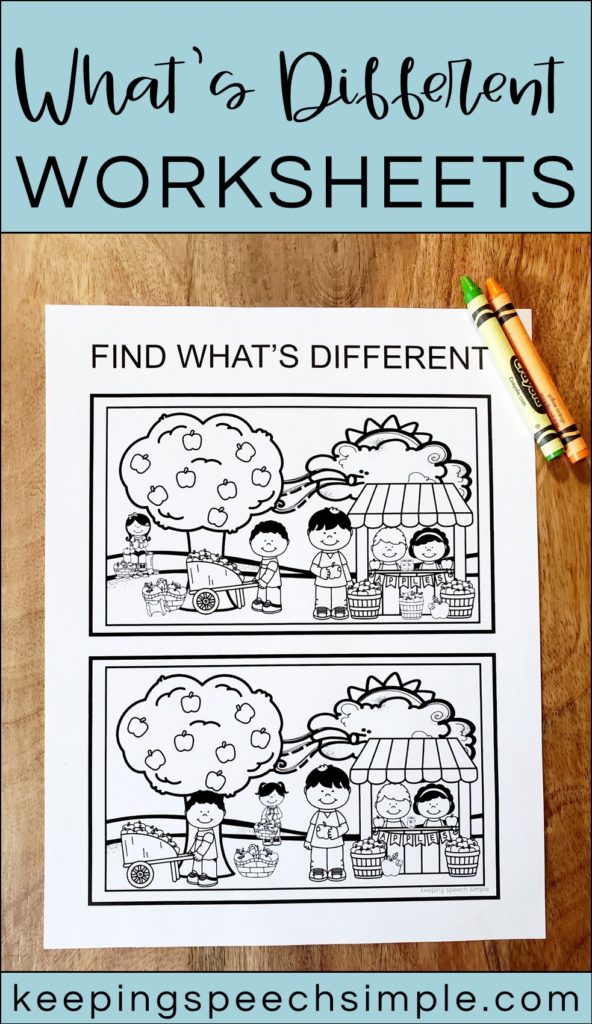
Using specific vocabulary when speaking and describing can be difficult for our students. When student’s describe specific differences between two similar scenes, that can have more success. Students are usually excited to find the differences and want to share what they’ve found. This provides a motivating context to target important speech and language goals! Here are some of the areas that can be targeted when we have students describe differences.
Word and Sentence Structures: By describing scenes that include people, there are opportunities to use subjective and possessive pronouns. When describing the actions of people or animals, students need to use correct verb tense and subject verb agreement.
Vocabulary: Often times the scene’s setting is rich in vocabulary, whether that setting is a farm, beach, classroom or home. Objects in different locations provide a context to use specific spatial concepts when describing differences. There are also opportunities for using negation and comparative concepts when there are differences in size, shape and color.
Fluency and Articulation Carry-over: Describing differences in pictures scenes is a fun alternative to get your fluency articulation students to use learned strategies when generalizing skills from drill work to conversation.
Answering “wh” questions: Since many Find the Differences Scenes use people and animals, there are multiple opportunities to ask “wh” questions related to the scenes.
Check it out! Want to give What’s Different Pictures a try in your therapy sessions? Try this free sample of my fall themed What’s Different worksheets. You can find those here.
Renee









Leave a Reply